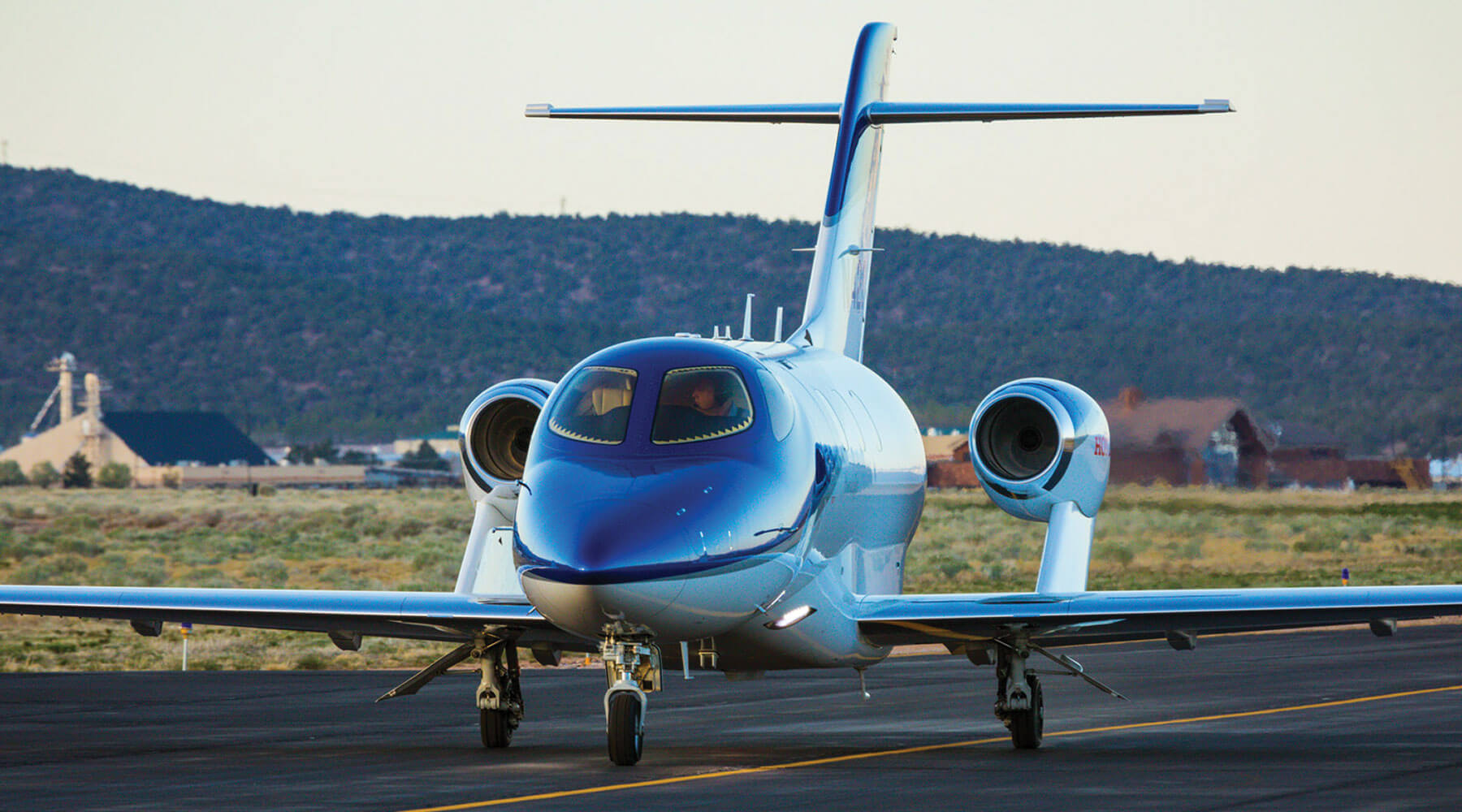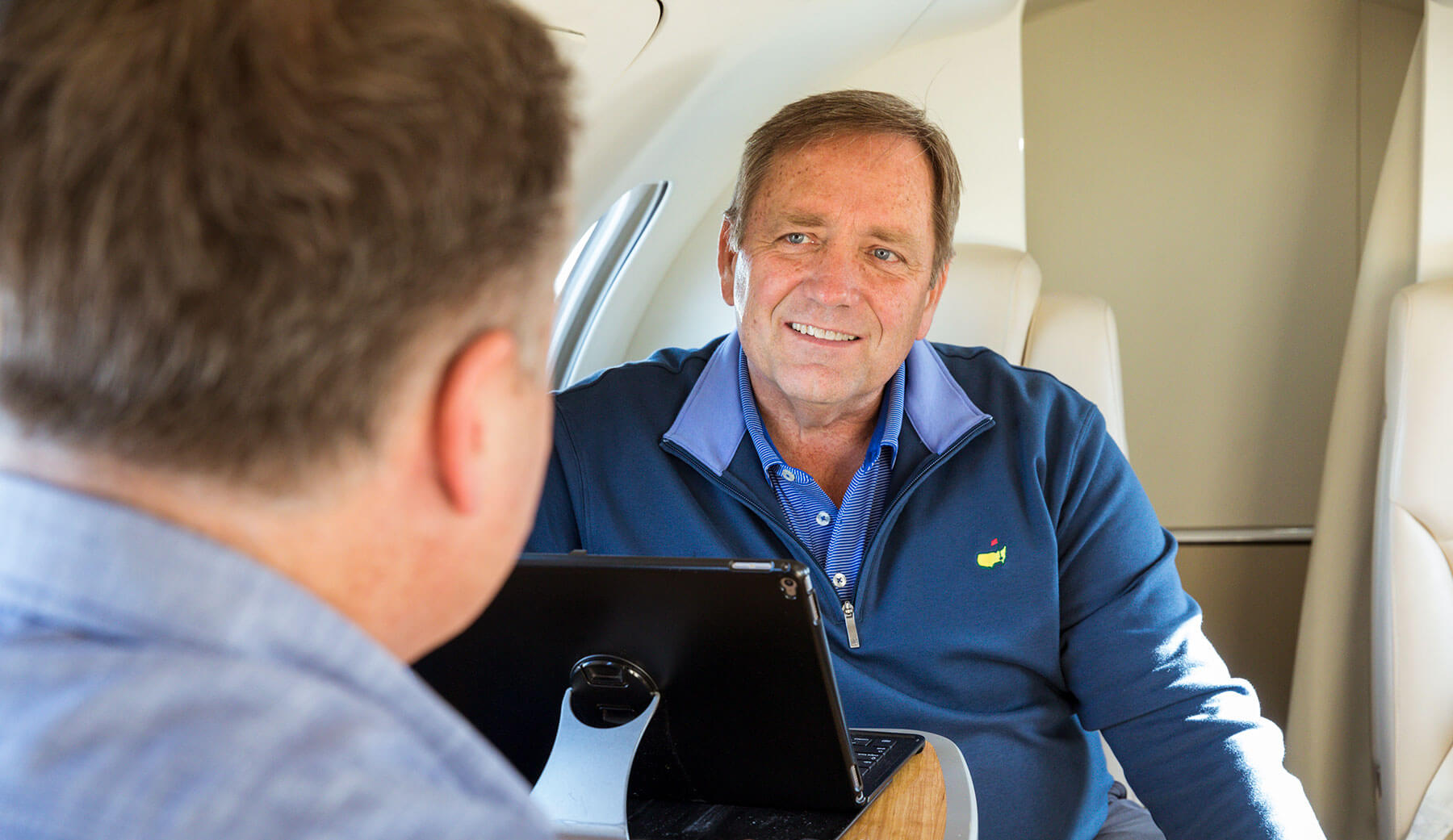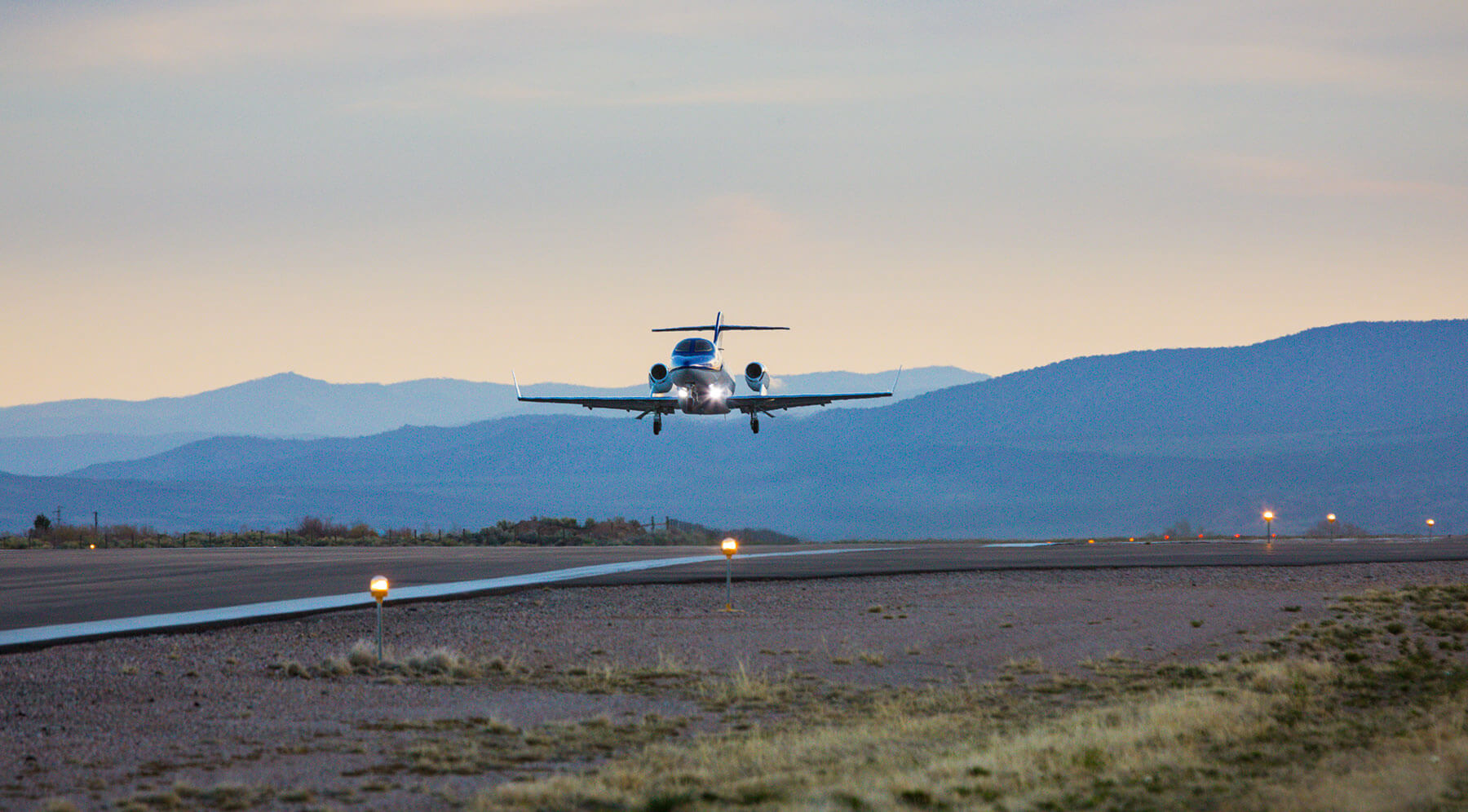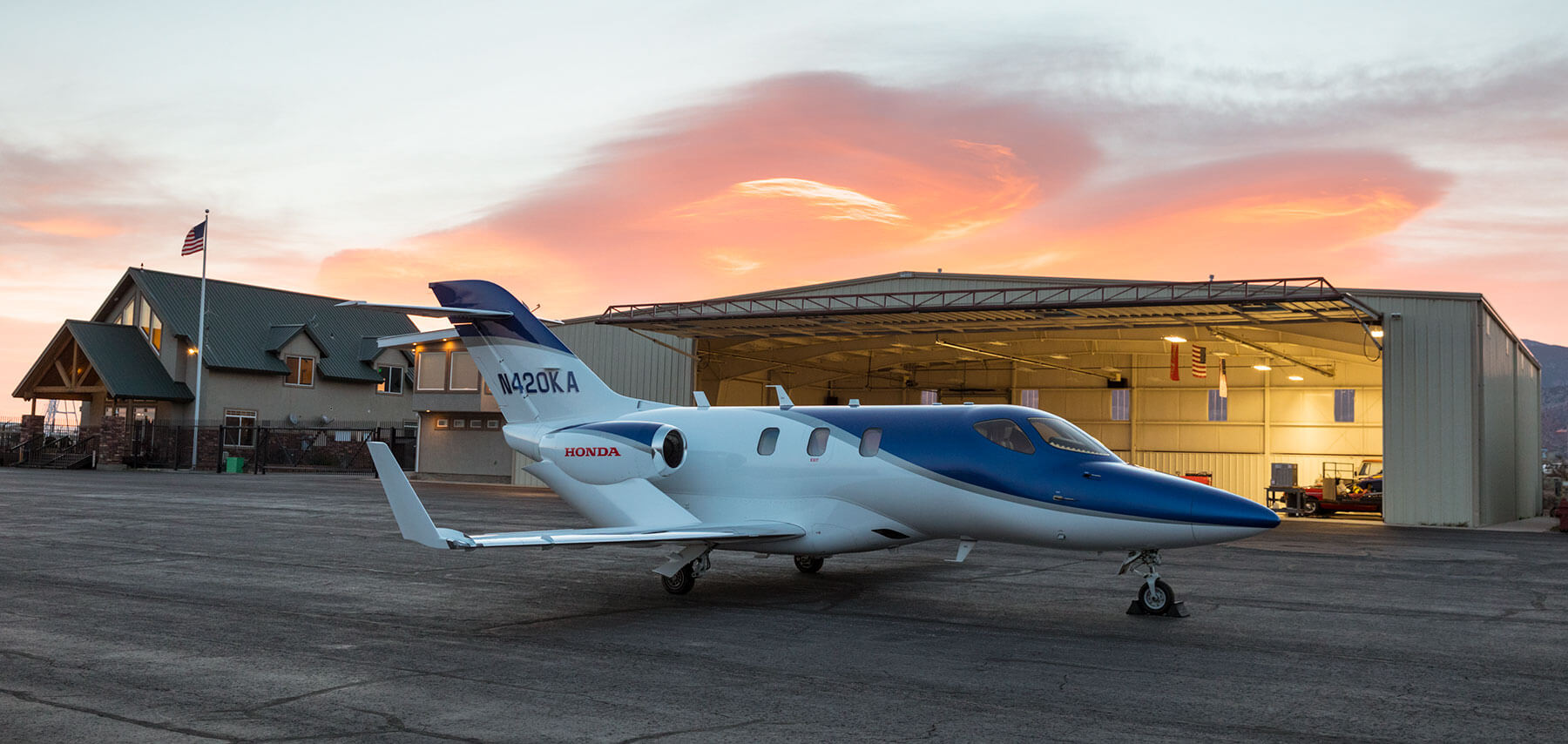
For Utah-based insurance broker Leavitt Group, flying the first retail-delivery HondaJet has its advantages.
July 17, 2017
After working 20 years in Cedar City, UT, Mark Leavitt knows the dusty stretch of Interstate 15 to Las Vegas well. Two airline flights a day leave Cedar City for Salt Lake City, so it was often quicker to drive three hours to Las Vegas and catch a flight from McCarran International Airport when he needed to travel. As a pilot, he makes the trip to Las Vegas less often, but still goes every other year for NBAA’s Business Aviation Convention & Exhibition (NBAA-BACE).
“I’m a consummate tire kicker. I love to see the newest equipment,” said Leavitt, who is affiliation director of the Leavitt Group, the 10th largest privately owned insurance broker in the United States. “I’d watched the HondaJet for years, and every time I went to NBAA-BACE, I’d talk to their salespeople.”
In the 1990s, Leavitt began flying a Cessna 340 for work. Leading the affiliation side of his business, he travels all the time, visiting independent insurance agencies to meet the owners, conducting due diligence and negotiating investments in their agencies. By 2015, when he traveled to NBAA-BACE, the group had added agencies in 18 states and Mark was flying an Eclipse 500.

“I’ve been involved in more than 150 transactions over the years,” said Leavitt, “Our 60/40 co-ownership model is the same my father and uncle started in 1959 (see sidebar). We invest by taking a majority position, and the current owners keep their culture and their reputation. And as we’ve grown, we’ve gone to more capable aircraft.”
The Leavitt Group has grown from $300 million in group-wide sales in 1999 to $3 billion in 2016, driven mostly by affiliation.
First Owners
At NBAA-BACE in 2015, HondaJet representatives told Mark the aircraft would receive its certification during the show, and he asked how he could buy one. Honda sells the aircraft through a dealer network, and the local dealer in Salt Lake City agreed to sell the Leavitt Group the very first retail delivery HondaJet – if Leavitt agreed to lease it back to the dealer for demo flights.
I’ll be honest: I was not really excited about getting more type ratings. And it was a lot of work, but from the very first day, we were programming the CDUs [control display units] and using the avionics to learn how everything functioned.
“Keystone Aviation offered us a great arrangement if they could use it occasionally,” said Leavitt, “and it works out, because Keystone also does all the maintenance on the airplane.” The Leavitt Group simultaneously sold the Eclipse to a company that it shares a hangar with – a Cedar City business that manufactures agricultural equipment. When the HondaJet is out on a demo flight or otherwise unavailable, the hangar partner agrees to lease the Eclipse back to the Leavitt Group. Through a series of dry leases, the Leavitt Group, the dealer and the agriculture business all maximize their aircraft uptime.
The arrangement with Keystone rarely affects Leavitt’s operations. The Leavitt Group took possession of the aircraft on Dec. 31, 2015, and in 2016 the company put 225 hours on it. Mark flew about half of those hours, and professional pilot Cole Orton flew the other 110 hours.

Learning a New Jet
“We got our type ratings in Greensboro, NC, at FlightSafety International,” said Orton, who has flown for the Leavitt Group since 2003. “They have their facility hooked onto the Honda plant in Greensboro, and we also go back there every year for recurrent training.”
Leavitt and Orton did their initial type rating on the HondaJet together, and they go together for recurrent training, but on business trips, they usually fly single-pilot.
“The HondaJet was built to be operated single-pilot,” said Orton. “The flight deck is laid out so everything’s reachable, it’s got a lot of automated systems to help the single pilot, and it’s a super-reliable airplane.”
That cockpit design, and FlightSafety’s latest approach to training, made earning the type rating a more enjoyable experience than either pilot expected. In 2012, FlightSafety began rolling out “operational day flow” training, which mixes scenario-based experiences with ground school instruction. Using an interactive three-screen setup, instructors take pilots through the aircraft’s systems in the order they would use them as a flight progresses.
“I’ll be honest: I was not really excited about getting more type ratings,” said Leavitt. “And it was a lot of work, but from the very first day, we were programming the CDUs (control display units) and using the avionics to learn how everything functioned.”

Single-Pilot Safety
The situational awareness provided by the glass-panel avionics is part of what give Leavitt and Orton assurance when flying the HondaJet single-pilot.
The aircraft’s all-weather performance is another critical factor, especially in Utah’s winters.
When the weather is challenging enough to increase the workload in the cockpit, Leavitt and Orton will fly together. All other times, deciding who flies is almost automatic.
For affiliation deals, Mark flies the airplane and his support team travels with him – a financial analyst with 38 years of experience and two younger analysts. For trips to existing Leavitt offices, Orton flies, usually bringing a team to help with implementing a new financial or IT solution.
“Most of the employees I take [on a flight] are regional managers, or leaders of a business, so they’re going to oversee audits or help with any challenges the co-owners may be having with their agency,” said Orton. “We take IT people, marketing people… and on many trips we have a full plane.”
Whoever is flying the airplane is the person who makes the go/no-go decisions. After more than a decade of flying together, the two pilots trust each other and debrief after each mission.
“Working together gives the ability to express concerns and share experiences,” said Leavitt.

Draw a Circle on the Map
Leavitt and Orton will also fly together on trips with multiple legs. The average leg they fly is 400 to 600 miles, but they can cover many more miles in a day.
“In a three-day trip, we can hit five or six states, and see seven or more agencies,” said Leavitt. “The airplane gives us the ability to look at a map and draw a big circle. We’ll make our first stop in Colorado, then go up to the Dakotas, over to Minnesota, Wisconsin, Ohio, and back through Oklahoma on our way home. It becomes much more cost-effective and a more valuable use of our time [than traveling by airline].”
Learn more about the Leavitt Group at www.leavitt.com.
SMALL-TOWN FAMILY BUSINESS
In the 1950s, Mark Leavitt’s father, Dixie, was a schoolteacher in Cedar City, UT. During the summers and on weekends, he sold insurance to help make ends meet. In 1952, he was accepted into graduate school at a California university, and was prepared to move his family there.
“A mentor told my father, ‘You’re good at this insurance thing, and if you stay with it, you could better support your growing family,’” recalls Mark. “The mentor then asked, ‘If we can go out today and make $750 selling insurance, will you stay in Cedar City?’ Well, that was about one third of a teacher’s annual salary back then, so my father took the challenge, and our family has been in Cedar City ever since.”
In 1959, together with his brother Bert, Dixie founded Leavitt Insurance Agency of Las Vegas, the first of many locations outside Cedar City. Four of Mark’s brothers have worked at the Leavitt Group, which is still based in Cedar City, which means flying, rather than driving, to many sites.
To get to the company’s agency in Durango, CO, for example, “you either drive 12 hours, or take a commercial flight, which takes about 12 hours [point to point],” said Leavitt. “Or I can climb in the HondaJet and be there in an hour and 10 minutes.”


 International Business Aviation Council Ltd.
International Business Aviation Council Ltd.